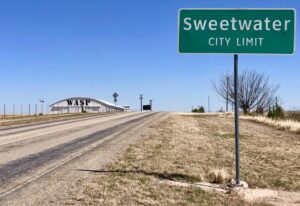
Avenger Field, outside Sweetwater, Texas, is a working airport and home to the National WASP WWII Museum, dedicated to the memory of the Women Airforce Service Pilots (or Women’s Army Service Pilots). Because of Texas’ climate and available land, the US Army Air Forces established 65 training fields in the state, and Avenger was home to the largest all-female air base in our history, for training purposes.
WASP and its predecessors, the Women’s Flying Training Detachment and the Women’s Auxiliary Ferrying Squadron, were in service from 1942 to 1944, at 126 military air fields in the US. In that time, their pilots ferried almost every type of military aircraft around the country and overseas, shuttled cargo, and towed targets so anti-aircraft gunners could get practice. Their service made available as many as 900 male pilots for combat missions.
The 1,074 women of WASP flew more than 60 million miles, and 39 died on the job. Despite this, they were not given military status or benefits, received two-thirds the pay of male counterparts, and had to pay for their own transportation to work, uniforms, and room and board. When they were killed, the government did not even pay to ship their bodies home. After the war they could not use the GI Bill or take a pension.
Only in the Carter administration were they given veteran status, and in the Obama administration awarded, as a group, the Congressional Gold Medal, one of two highest civilian honors in the US, for those “who have performed an achievement that has an impact on American history and culture that is likely to be recognized as a major achievement in the recipient’s field long after the achievement.”
The museum, which opened in 2005, is still expanding but has a hanger full of exhibits, including aircraft such as the Stearman PT-17, Fairchild PT-19, Valiant BT-13, and Bobcat UC-78; a primitive Link Trainer; a Jeep and a period car; a walk of fame of 29 of the veterans who came back to inaugurate the museum; a recreated dormitory bay; photos; clothing; and a sculpture of Fifinella, the female gremlin illustrated by Walt Disney, from a Roald Dahl book, which was used as the WASP mascot. The gift shop has a good collection of on-topic books, patches, pins, and other memorabilia.
My mother, born in 1920, wanted badly to be a WASP in the war. She secretly took flight lessons to prepare, but when her father, a prominent regional politician, heard about it, he shut her down. Many of the women in WASP were from wealthy backgrounds, since costs to them were high. Some 25,000 applied. Those who served have fascinating stories, barely tapped for writing and film.
Cornelia Fort was the first female instructor pilot in the state of Tennessee, and she worked around the country. She was in the air with a civilian student over Pearl Harbor when the Japanese attacked. She managed to land but was strafed. She became the second WASP, and she was killed in the line of duty, when an inexperienced male Army pilot she was leading in formation tried to impress her by barrel-rolling around her plane. (He lived.)
Jacqueline Cochrane was a founder of WASP, and its Director. She won air races, broke speed records, and was the first woman to break the sound barrier. She became a colonel in the nascent US Air Force and received the Distinguished Service Medal and three Flying Crosses.
Anne Noggle became an NEA- and Guggenheim-winning photographer after the war. Her work often focuses on women as they age. “I find young faces a tabula rasa,” she said, “nothing is written there. They are empty until they reach their 40s. Then they become photographable.” She published For God, Country and the Thrill of It: Women Airforce Service Pilots in World War II in 1990.
Ola Mildred Rexroat was Oglala Sioux, from Pine Ridge, and the only Native American WASP pilot. She already had a BA in art from University of New Mexico when she joined, and worked as an air traffic controller after the war.
The docent at the museum told me that there are several WASP fliers still alive. The youngest is 97.
